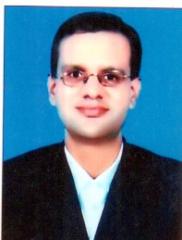It is definitely a matter of great significance that while striking the right chord, the Supreme Court in a most learned, laudable, landmark, logical and latest judgment titled Dhirubhai Bhailabhai Chauhan & Anr vs State of Gujarat & Ors in Criminal Appeal No. 816 of 2016 With CRL No. 817 of 2016 that was pronounced as recently as on March 21, 2025 has acquitted six persons from Gujarat in post-Godhra riots case. One can easily infer that the key points that can be culled from this notable judgment are as follows:
- Onerous Duty on Courts: In cases that involve group clashes with many participants, courts have an onerous responsibility to ensure that innocent bystanders are not wrongfully convicted and deprived of their liberty. This principle underscores the need for careful consideration of evidence before reaching a conviction.
- Conviction Based on Overt Acts: When a large number of individuals are present at a scene, it is prudent to convict only those against whom specific overt acts are alleged. Mere presence at the scene should not automatically imply involvement in unlawful activities.
- Role of Witness Testimony: Courts should be very cautious in relying on witness testimonies that make very general statements without any specific references pertaining to the accused or their roles. This precaution is particularly important in cases with many participants where accurate identification may be challenging.
- Natural Presence of Residents: The presence of the appellants at the scene of the riots was deemed natural, as they were residents of the same village. Their mere presence, without additional incriminating evidence, does not establish their involvement in unlawful assembly.
- Lack of Incriminating Evidence: There was no evidence indicating that the appellants incited the mob or engaged in any actions that would categorize them as part of the unlawful assembly. Their arrest at the scene, without any instruments of destruction or inflammatory materials, does not confirm their culpability.
- High Court’s Error: The High Court’s decision to reverse the acquittal of the appellants was found to be unjustified. The evidence presented did not sufficiently demonstrate that the appellants were part of the unlawful assembly, and their arrest alone was not enough to establish guilt.
- Restoration of Trial Court’s Order: The Supreme Court ultimately restored the order of the Trial Court, allowing the appeals and discharging the bail bonds of the appellants if they were on bail.
There can be just no gainsaying that all these most important key points collectively highlight the importance of specific evidence in establishing guilt in cases involving group violence and the need for courts to protect the rights of individuals who may be wrongfully accused. It must be emulated by the Courts in similar such cases! No denying it!
At the very outset, this brief, brilliant, bold and balanced judgment authored by Hon’ble Mr Justice Manoj Mishra for a Division Bench of the Apex Court comprising of Hon’ble Mr Justice Pamidighantam Sri Narasimha and himself sets the ball in motion by first and foremost putting forth in para 1 that:
These two appeals impugn a common judgment and order of the High Court of Gujarat at Ahmedabad (High Court) dated 05.05.2016 passed in Criminal Appeal No.155 of 2016 (State of Gujarat v. Dhirubhai Bhailalbhai Chauhan & 18 others), whereby the High Court, though maintained the acquittal of 12 out of 19 accused who were put on trial, partly reversed the judgment and order of acquittal passed by the Trial Court in Sessions Trial No.119 of 2003 and thereby convicted the appellants for offences punishable under sections 143, 147, 153 (A), 295, 436 and 332 of the Indian Penal Code (The IPC) and punished them with varied sentences, all to run concurrently, maximum being of one year.
To put things in perspective, the Bench envisages in para 2 while dwelling on the background facts that:
The prosecution case, founded on a first information report3 lodged by PW-1, a policeman, is to the effect that on 28.02.2002, while the informant was patrolling with other police personnel, information was received at around 22:10 hours that a mob had surrounded a graveyard and a mosque at village Vadod; when the police party arrived at the spot and instructed the mob to disperse, the mob pelted stones causing damage to police vehicles as well as injury to police personnel; in consequence, police had to take recourse to release of tear gas shells and firing of gun shots, which resulted in a stampede like situation; in the melee, the police could apprehend 7 persons on the spot, namely, (1) Dhirubhai Bhailalbhai Chauhan, (2) Maheshbhai Bhailalbhai Chauhan, (3) Mukeshbhai Ambalal Patel, (4) Kiritbhai Manibhai Patel, (5) Ravjibhai Harmanbhai Patel, (6) Dipakkumar Bhopalbhai Negi and (7) Sanjaykumar Laxmansinh Mahida, all residents of village Vadod. Investigation resulted in a charge sheet against 19 persons including the ones who were arrested on the spot. Based on the chargesheet cognizance was taken, giving rise to Sessions Trial No.119/2003.
Do note, the Bench notes in para 3 while dwelling on Trial Court’s judgment that:
The Additional Sessions Judge to whom the matter was assigned by the Sessions Judge, conducted the trial and by judgment and order dated 11.07.2005 acquitted all the 19 accused by giving them the benefit of doubt.
Notably, the Bench also notes in para 4 that:
The key features of the case on which the Trial Court based its decision, inter alia, are: (i) The police witnesses were stereotypical in their deposition; they could not identify even a single accused; and in their cross-examination, they could not disclose as to which accused was caught by which policeman. (ii) PW-2, who deposed about participation by the accused in rioting, was confronted with omissions in his previous statement regarding (a) the place from where he witnessed the incident and (b) the presence of street-light, which helped him in identifying the accused. (iii) The investigating officer (PW-20), during his cross-examination, had stated that no damage was caused to the house of the eye-witness PW-2. Having regard to the above and the evidence on record as also that nothing was shown to have been recovered from the accused at the time of their arrest, the trial court gave the accused the benefit of doubt.
Quite significantly, the Bench deems it fit to postulate in para 15 that:
In the instant case, the appellants were residents of the same village where riots broke out, therefore their presence at the spot is natural and by itself not incriminating. More so, because it is not the case of the prosecution that they came with arms or instruments of destruction. In these circumstances, their presence at the spot could be that of an innocent bystander who had a right to move freely in absence of prohibitory orders. In such a situation, to sustain their conviction, the prosecution ought to have led some reliable evidence to demonstrate that they were a part of the unlawful assembly and not just spectator. Here no evidence has come on record to indicate that the appellants incited the mob, or they themselves acted in any manner indicative of them being a part of the unlawful assembly. The only evidence in that regard came from PW-2 and PW-4, but that has been discarded by the High Court for cogent reasons which need not be repeated here. In our view, therefore, on basis of their mere presence at the scene of crime, an inference could not have been drawn that the appellants were a part of the unlawful assembly.
Most significantly and most forthrightly, the Bench then encapsulates in para 16 what constitutes the cornerstone of this notable judgment postulating that:
The suggestion given by the defense counsel to the investigating officer, during cross-examination, that the accused were trying to douse the fire when they were apprehended, though might be useful to confirm their presence at the spot, cannot be used to infer that accused were a part of the unlawful assembly. This we say so, because it does not rule out their presence as a bystander or a spectator.
Besides that, in absence of any inculpatory role ascribed to the appellants, their arrest on the spot is not conclusive that they were a part of the unlawful assembly, particularly when neither instrument of destruction nor any inflammatory material was seized from them. Besides that, the police resorted to firing causing people to run helter skelter. In that melee, even an innocent person may be mistaken for a miscreant. Thus, appellants’ arrest from the spot is not a guarantee of their culpability. In our view, therefore, mere presence of the appellants at the spot, or their arrest therefrom, was not sufficient to prove that they were a part of the unlawful assembly comprising of more than a thousand people. The view to the contrary taken by the High Court is completely unjustified. More so, while hearing an appeal against an order of acquittal.
As a corollary, the Bench then very rightly holds in para 17 that:
For all the reasons above, we are of the view that the High Court erred in reversing the order of acquittal of the appellants.
Finally, the Bench then concludes by very rightly holding in para 18 that:
The appeals are, therefore, allowed. The impugned judgment and order of the High Court is set aside, and the order of the Trial Court is restored. If the appellants are on bail, they need not surrender. Their bail bonds, if any, are discharged. Pending application(s), if any, stand disposed of.
Sanjeev Sirohi, Advocate,
s/o Col (Retd) BPS Sirohi, A 82, Defence Enclave,
Sardhana Road, Kankerkhera, Meerut - 250001, Uttar Pradesh


